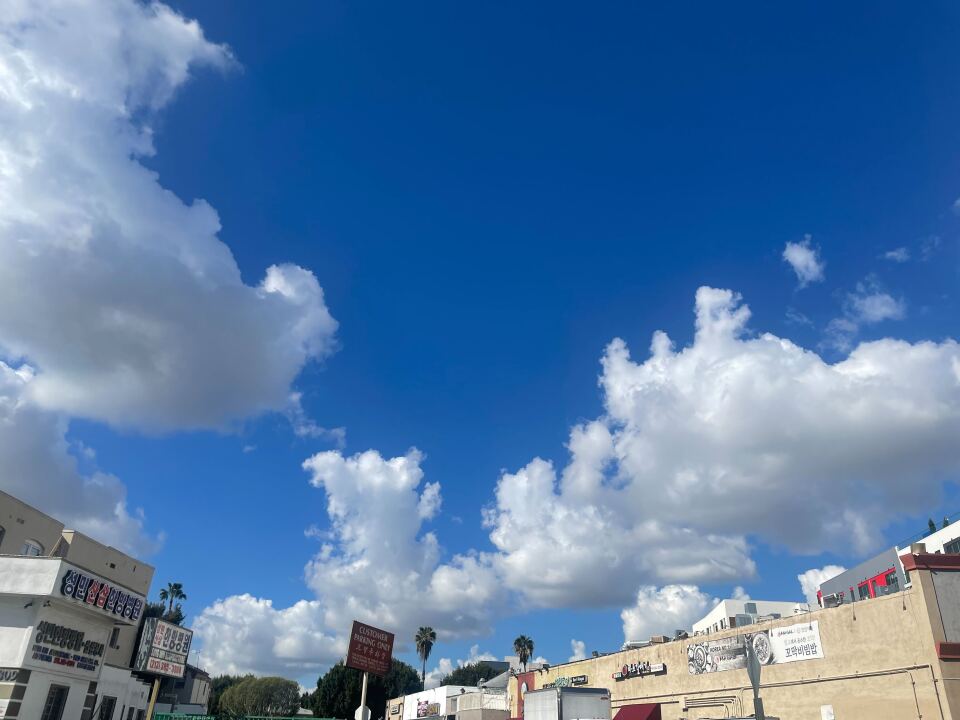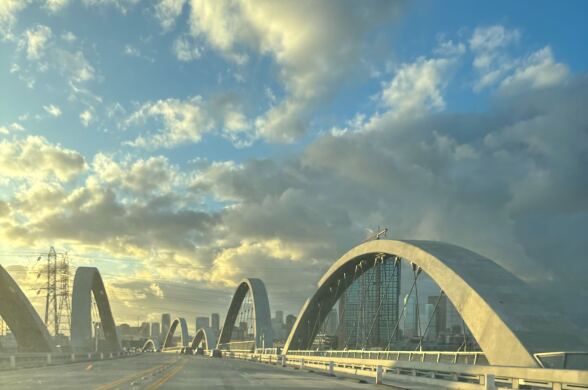Truth matters. Community matters. Your support makes both possible. LAist is one of the few places where news remains independent and free from political and corporate influence. Stand up for truth and for LAist. Make your year-end tax-deductible gift now.
After The Storm, LA Is Once Again A Different Kind Of Beautiful... Here's The Science Behind It

You've probably noticed it by now — Southern California is looking absolutely stunning, with a visibility of 15 miles making for crystal-clear views of downtown from almost anywhere in the city.
The smog problem in Los Angeles County and the Inland Empire is well-documented. So days like this are a welcome respite, and you certainly couldn't be blamed for getting your phone out and taking pics — we here in the LAist newsroom have been doing exactly that.
What causes smog?
Smog happens due to a phenomenon that meteorologists call a temperature inversion, which creates a "lid" of warmer air over the lower part of the atmosphere. Fog and air particles build up closer to the ground where the air is cooler, which limits visibility during most parts of the year.
"If you've ever flown out of LAX on a marine layer kind of day, and it's all cloudy and foggy, you don't have to go very far after takeoff when you're in perfect sun, clear skies," National Weather Service meteorologist Ryan Kittell said. "You just see like a blanket of clouds below you."
On days that are more smog than fog, particularly in the summer and fall, the same effect leads to lower visibility and less breathable air.

Why winter rain is especially good for the air
But Kittell said the phenomenon subsides during the winter. That's because the temperature inversion — the atmospheric "lid" — is caused in large part by warmer summer temperatures in the desert.
"During the wintertime, it's usually kind of neutral, it gets actually cold in the deserts, and kind of mild at the coast, but then in the summertime, it flips," Kittell said. "After a rain event, it tends to clear all that out, so we don't have that lid."

Another major factor that keeps smog within the L.A. basin is wind coming off the ocean, which is also less pronounced this time of year, Kittell said, since they tend to come from more directions than just the west during the winter.
And major storm events, especially one with intense gusts like we saw this week, tend to bring their own wind patterns. This also allows smog particles to disperse more from polluted areas.
Finally, rain is the cherry on top of the clean-air sundae — it washes pollutants out of the atmosphere and onto the ground, according to Kittell.

That increase in visibility makes for some great photos (if we do say so ourselves), not to mention a welcome respite for people with respiratory issues.
So get out there and breathe in the clean air after the rain, and maybe snap a pic or two while it lasts — to paraphrase Natasha Bedingfield, no one else can feel it for you.












